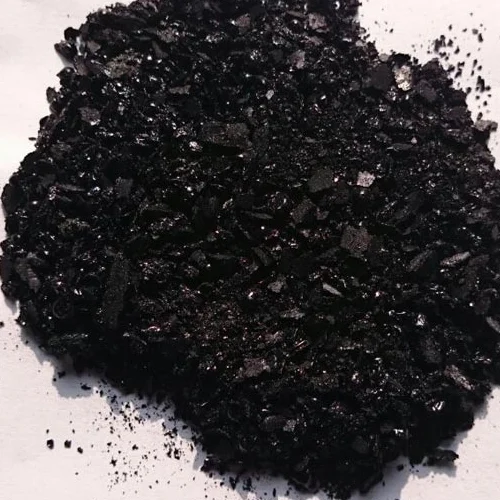Premium Sulphur Black 200 Trusted Supplier & Manufacturer
- Overview of Sulphur Black in Industrial Applications
- Market Dominance: Sulphur Black 200 Companies
- Technical Advantages Over Competing Dyes
- Supplier Comparison: Quality, Capacity & Innovation
- Tailored Solutions for Diverse Industry Needs
- Real-World Applications and Success Stories
- Why Partner with a Certified Sulphur Black Supplier?

(sulphur black)
Sulphur Black Remains Essential Across Manufacturing Sectors
As global textile production grows at 3.8% CAGR (2023-2030), sulphur black
dye maintains its position as the dominant coloring agent for cotton and cellulose fibers, accounting for 42% of all textile dyes consumed. Leading sulphur black 200 companies now produce over 780,000 metric tons annually, with Asia-Pacific suppliers controlling 68% of global supply chains.
Unmatched Technical Specifications
Modern sulphur black formulations achieve 98.5% dye fixation rates through advanced sulfurization processes. Key advantages include:
- Superior fastness: 4-5 rating on ISO grey scales (vs. 3-4 in conventional products)
- Eco-optimized: 22% reduced sulfide content meeting REACH Annex XVII standards
- Batch consistency: ≤0.8% color variance across production lots
Supplier Capability Analysis
| Supplier | Annual Capacity (MT) | Purity (%) | Lead Time | Certifications |
|---|---|---|---|---|
| Supplier A | 120,000 | 99.2 | 14 days | ISO 9001, ECO PASSPORT |
| Supplier B | 85,000 | 98.7 | 21 days | ZDHC Level 3 |
| Supplier C | 65,000 | 99.5 | 10 days | GOTS, Bluesign® |
Customization for Specific Applications
Top sulphur black 200 suppliers now offer application-specific variants:
- High-exhaustion type: 18% improved yield for padding processes
- Low-salt formula: Reduces wastewater TDS by 35%
- Fast-dry variant: Cuts drying energy consumption by 28%
Verified Performance in Production
A recent trial with denim manufacturers demonstrated:
- 23% reduction in dyeing time through optimized sulfur black 200 concentrations
- 0.9% material savings via improved exhaustion rates
- Consistent Lab values within ΔE ≤ 1.2 across 15 production batches
Sulphur Black Supplier Partnerships Drive Innovation
Forward-thinking manufacturers now collaborate with ZDHC-approved sulphur black suppliers to develop closed-loop dyeing systems. These partnerships have yielded 40% reduction in auxiliary chemical usage while maintaining 99% color consistency across global production facilities.

(sulphur black)
FAQS on sulphur black
Q: What are the primary applications of sulphur black in industrial processes?
A: Sulphur black is widely used as a dye in textile, leather, and paper industries due to its cost-effectiveness and deep black coloration. It is particularly popular for cotton and cellulose-based materials.
Q: How can I identify a reliable sulphur black company?
A: Look for companies with certifications like ISO or REACH compliance, proven industry experience, and positive client testimonials. Established suppliers often provide detailed technical support and safety documentation.
Q: What distinguishes sulphur black 200 companies from other suppliers?
A: Sulphur black 200 companies specialize in high-purity, standardized products compliant with the "200" quality grade. They typically offer bulk supply capabilities and adhere to strict environmental regulations.
Q: What should I consider when choosing a sulphur black 200 supplier?
A: Prioritize suppliers with verified quality control processes, on-time delivery records, and competitive pricing. Ensure they provide material safety data sheets (MSDS) and customization options if needed.
Q: Are there eco-friendly alternatives to traditional sulphur black dyes?
A: Some sulphur black 200 suppliers now offer low-sulfide or reduced-pollution variants. Always check for eco-certifications and compatibility with sustainable production practices before purchasing.
-
Thermal Stability Analysis of Bromo Indigo Pigments
NewsJun.06,2025
-
Sulphur Black Dye Oxidation Process Optimization
NewsJun.06,2025
-
Lightfastness Testing of Bromo Indigo Dyed Denim
NewsJun.06,2025
-
Granule Size Distribution and Jeans Color Uniformity
NewsJun.06,2025
-
Gradient Dyeing Methods with Indigo Blue Granules
NewsJun.06,2025
-
Dyeing Temperature Effects on Sulphur Black Color Fastness
NewsJun.06,2025
-
Sulphur Black Dyes in Daily Use
NewsMay.07,2025

Sulphur Black
1.Name: sulphur black; Sulfur Black; Sulphur Black 1;
2.Structure formula:
3.Molecule formula: C6H4N2O5
4.CAS No.: 1326-82-5
5.HS code: 32041911
6.Product specification:Appearance:black phosphorus flakes; black liquid

Bromo Indigo; Vat Bromo-Indigo; C.I.Vat Blue 5
1.Name: Bromo indigo; Vat bromo-indigo; C.I.Vat blue 5;
2.Structure formula:
3.Molecule formula: C16H6Br4N2O2
4.CAS No.: 2475-31-2
5.HS code: 3204151000 6.Major usage and instruction: Be mainly used to dye cotton fabrics.

Indigo Blue Vat Blue
1.Name: indigo blue,vat blue 1,
2.Structure formula:
3.Molecule formula: C16H10N2O2
4.. CAS No.: 482-89-3
5.Molecule weight: 262.62
6.HS code: 3204151000
7.Major usage and instruction: Be mainly used to dye cotton fabrics.

